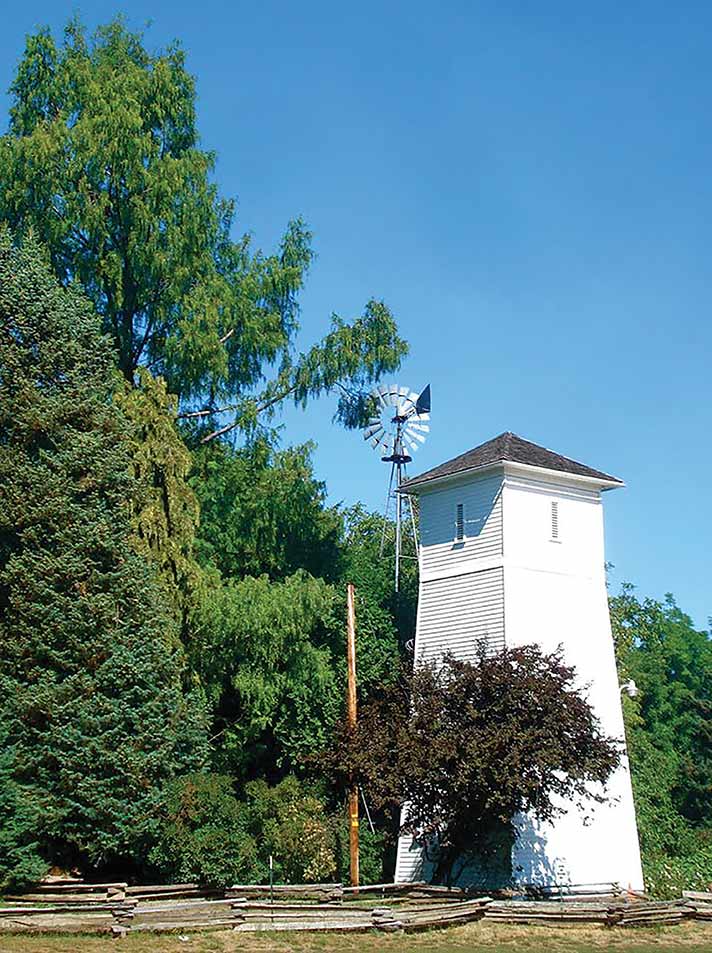Take a trip with us, back to 2013. In response the dwindling population of the Monarch Butterfly, local citizens began establishing Monarch waystations throughout the Rogue Valley. Led by Tom Landis, retired National Nursery Specialist for the USDA Forest Service, volunteers designed Monarch waystations to have the components needed for a healthy butterfly habitat. During the quiet winter months, Hanley Farm joined the thousands of monarch waystations in the Rogue Valley and across the country, creating a space to provide a safe habitat during breeding season. Be sure to visit the waystation on your next visit!
When you arrive at Hanley Farm, at the back of the water tower, you’ll see a redwood tree that was thought to be extinct! That is until, in the 1940s, a living grove was discovered in a remote Chinese village. How did the Dawn Redwood (or Metasequoia glyptostroboides) come to Hanley Farm?
In 1947, Dr. Merril, of Harvard University, sent the tree’s identifier, Dr. Hu, money to fund a seed-collecting mission. John Gribble, a US Forest Service retiree, who learned that seeds were being distributed, wrote to Dr. Merril requesting a packet of seeds. Gribble planted the seeds, and when they were 2 ½ “feet tall, he’d give them away.” The Hanley sisters were personal friends of John Gribble, and received one of those trees. Dawn Redwoods can grow as tall as 150 feet, with a 6’ diameter trunk! Our redwood is a tad smaller, but it’s still pretty impressive.
February 5 & 12: Windows in Time—Guest speaker, Roy Saigo, retired SOU President and educator, presents “Southern Oregon University, Its History and Significance.” Saigo discusses the university’s origins and accomplishments, including the launching of the Oregon Shakespeare Festival and the 2008 opening of the RCC/SOU Higher Education Center. Noon-1pm. Wednesday, February 5: Medford Library, 205 S. Central Avenue; Wednesday, February 12: Ashland Library, 410 Siskiyou Blvd.
February 4: First Tuesday Pub Talk—In the late 1600s there was a thriving Alaskan Yup’ik village, known today as Nunalleq. Currently the subject of an archaeological research project, Yup’ik residents are considered descendants of the Nunalleq people. Anna C. Sloan, University of Oregon PhD student and project participant, presents, “Archaeology in Western Alaska: Exploring Ancient Identities at the Nunalleq Site.” February 4, 7:00pm, Four Daughters Irish Pub, 126 West Main. Pub Talks are free, monthly historical talks sponsored by the Southern Oregon Historical Society.

 Pam Sasseen is a volunteer at Hanley Farm. For more information about Hanley Farm or upcoming events, please visit
Pam Sasseen is a volunteer at Hanley Farm. For more information about Hanley Farm or upcoming events, please visit